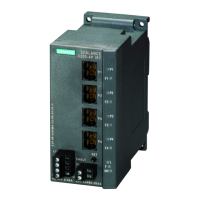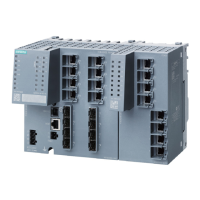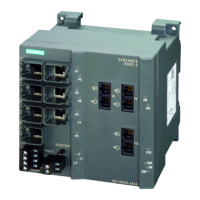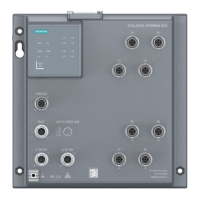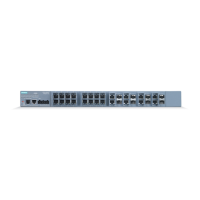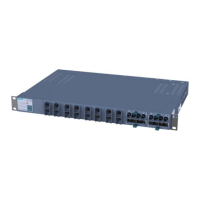Configuration using Web Based Management and Command Line Interface
4.7 The Router menu (SCALANCE X414-3E)
SCALANCE X-300 / X-400
304 Configuration Manual, 10/2014, C79000-G8976-C187-22
Here, you enter the area ID to which this interface will belong.
Select this option if you want this interface to be involved in OSPF traffic.
Path costs of the router on this interface. Default is 1. Enter higher values here for slower
networks.
Enter the router priority here. This only plays a part in the selection of designated router. This
parameter can be selected differently on routers within the same IP subnet.
Here, you enter the expected delay (in seconds) when sending a link update packet. In local
area networks, the value 1 is normally selected (range of values: 1 through 3600).
Here, you enter the time (in seconds) after which a packet will be transmitted again if no
confirmation was received. In a LAN, the value 5 is normally selected.
Here, you enter the interval (in seconds) between two Hello packets (range of values: 1
through 65,535).
Here, enter an interval (in seconds) after which a router is shown as "failed" if no further
Hello packets are received from it during this time.
Select the authentication method of this interface here. You can choose between:
● none: no authentication
● simple: authentication using a password
● MD5: authentication with keyed MD5 method
Note
The "Key ID" text box is displayed only if the authentication method was set to MD5. Only
then is it possible to use several keys.
Enter the key ID here with which the password will be used as the key. Since the key ID is
transferred with the protocol, the same key must be stored under the same key ID on all
neighboring routers.
If authentication uses a password, a key is required via MD5 that can be entered here.

